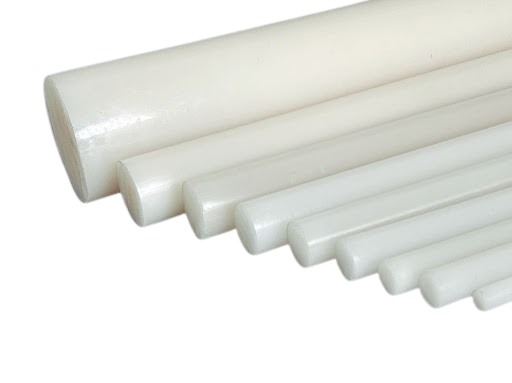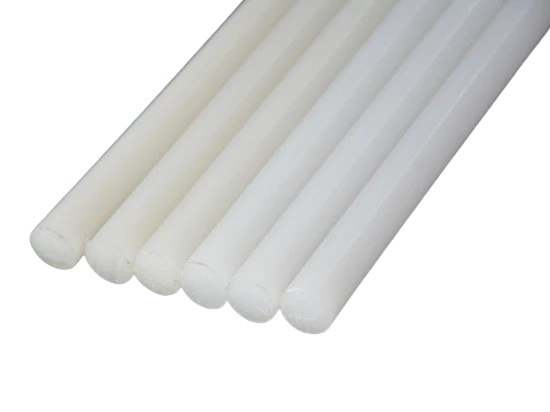What Are PVDF Rods?
-
- Solid rods made from Polyvinylidene Fluoride (PVDF)
- High-performance fluoropolymer known for its robustness
- Used in various industrial and high-tech applications
-
Historical Background
- Developed in the 1960s for its superior chemical and thermal properties
- Initially used in chemical and aerospace industries
Processing and Fabrication
-
Machining
- Cutting: Can be cut to size using standard cutting tools
- Drilling and Turning: Precision drilling and turning are achievable
-
Custom Fabrication
- Custom Sizes: Can be fabricated into various sizes and shapes
- Tolerances: High precision tolerances can be maintained
Properties of PVDF Rods
-
Physical Properties
- Color: Typically white or translucent
- Density: Approximately 1.78 g/cm³
- Rigidity: High rigidity and dimensional stability
-
Thermal Properties
- Service Temperature: Effective up to 150°C
- Thermal Conductivity: Low thermal conductivity, useful for insulation
-
Chemical Resistance
- Acids and Bases: Excellent resistance to most acids and bases
- Solvents: Highly resistant to organic solvents and chemicals.
Applications of PVDF Rods
-
Chemical Processing
- Piping and Tubing: Used in piping systems for handling corrosive chemicals
- Valve Components: Ideal for valve seats and seals due to chemical resistance
-
Aerospace Industry
- Structural Components: Employed in aerospace components for its lightweight and durable properties
- Insulation: Used for insulating cables and other sensitive components
-
Medical and Pharmaceutical
- Processing Equipment: Components for pharmaceutical and laboratory equipment
- Diagnostic Devices: Parts for diagnostic and medical devices.
Safety and Handling
-
Storage
- Conditions: Store in a cool, dry place away from direct sunlight
- Protection: Protect from extreme temperatures and physical damage
-
Handling Precautions
- Protective Gear: Use appropriate protective gear when handling
- Ventilation: Ensure proper ventilation during machining
-
Disposal
- Regulations: Follow local regulations for disposal
- Recycling: Explore recycling options for PVDF materials
Advantages of PVDF Rods
-
Durability
- Long Lifespan: Resilient in harsh environments, long-lasting
- Low Maintenance: Requires minimal maintenance
-
Non-Reactivity
- Chemical Safety: Safe for use with a wide range of chemicals
- Stable Performance: Maintains performance in extreme conditions
Limitations of PVDF Rods
-
Cost
- Material Costs: Generally higher cost compared to some alternative materials
- Processing Expenses: Requires specialized equipment for precise fabrication
-
Flexibility
- Limited Flexibility: Can be less flexible compared to other materials, may be prone to cracking under certain conditions
Future Trends
-
Research and Development
- Enhanced Properties: Ongoing research to improve flexibility and impact resistance
- Cost Reduction: Innovations aimed at reducing material and production costs
-
Emerging Applications
- Innovative Uses: Potential for new applications in emerging technologies
- Sustainable Practices: Development of more environmentally friendly processing methods




